Restriction Enzymes BI PLTW 6.1.1, 6.1.1 Restriction Enzyme Challenge, problem 6 quiz pltw, BI Problem 6-Key Term
1/70
There's no tags or description
Looks like no tags are added yet.
Name | Mastery | Learn | Test | Matching | Spaced |
|---|
No study sessions yet.
71 Terms
Source of Restriction Enzymes
Bacteria
Why bacteria contain restriction enzymes
To protect themselves from viral DNA
How Bacteria protect their own DNA
Add methyl groups so that their DNA is not cut
Restriction Site
A specific sequence on a DNA strand that is recognized as a cut site by a restriction enzyme; usually a palindrome (Ex. GAATTC)
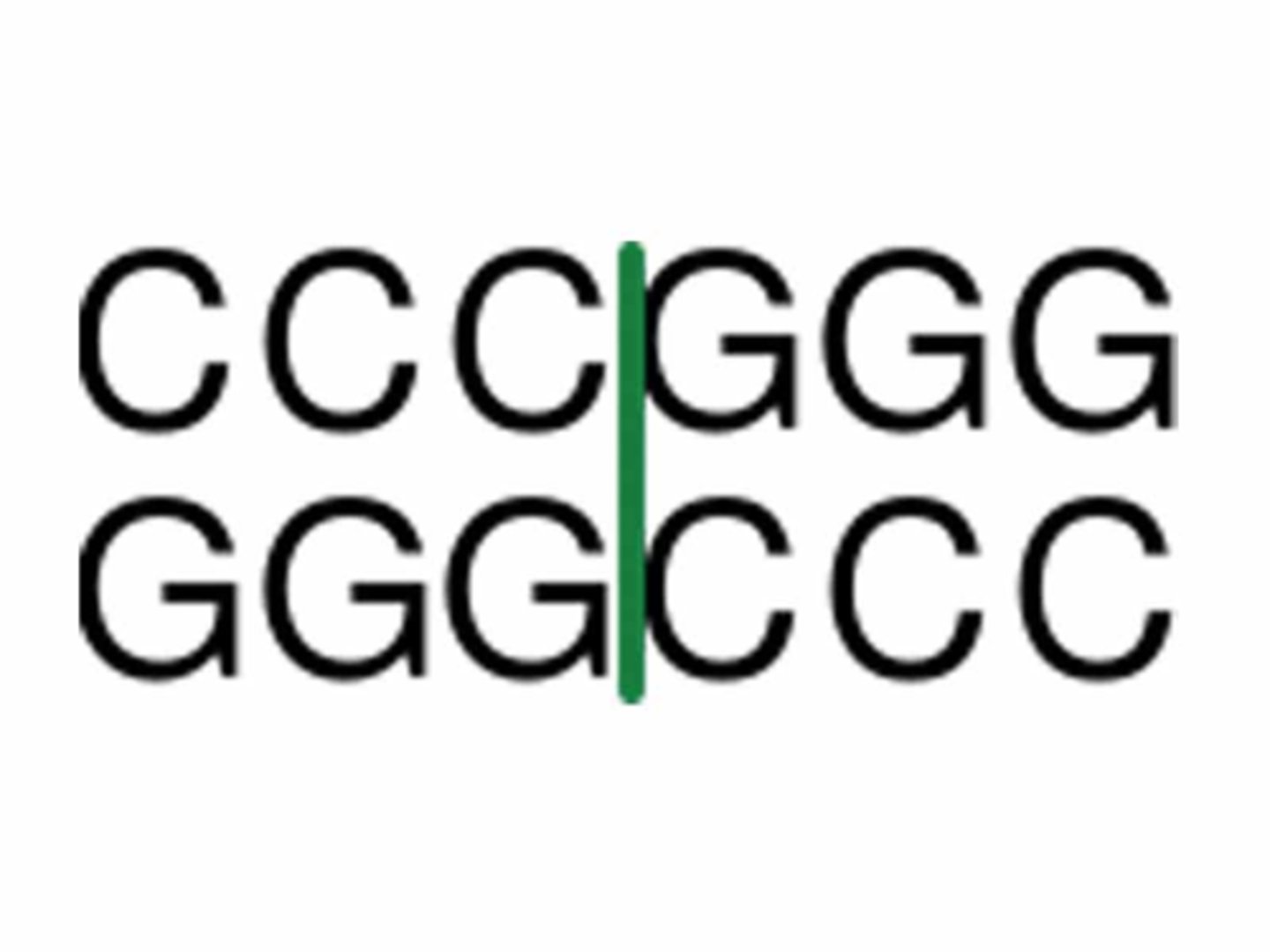
Sticky Ends
Single stranded ends of DNA left after cutting with enzymes

Blunt Ends
Restriction fragments with no overlapping ends left after cutting with enzymes
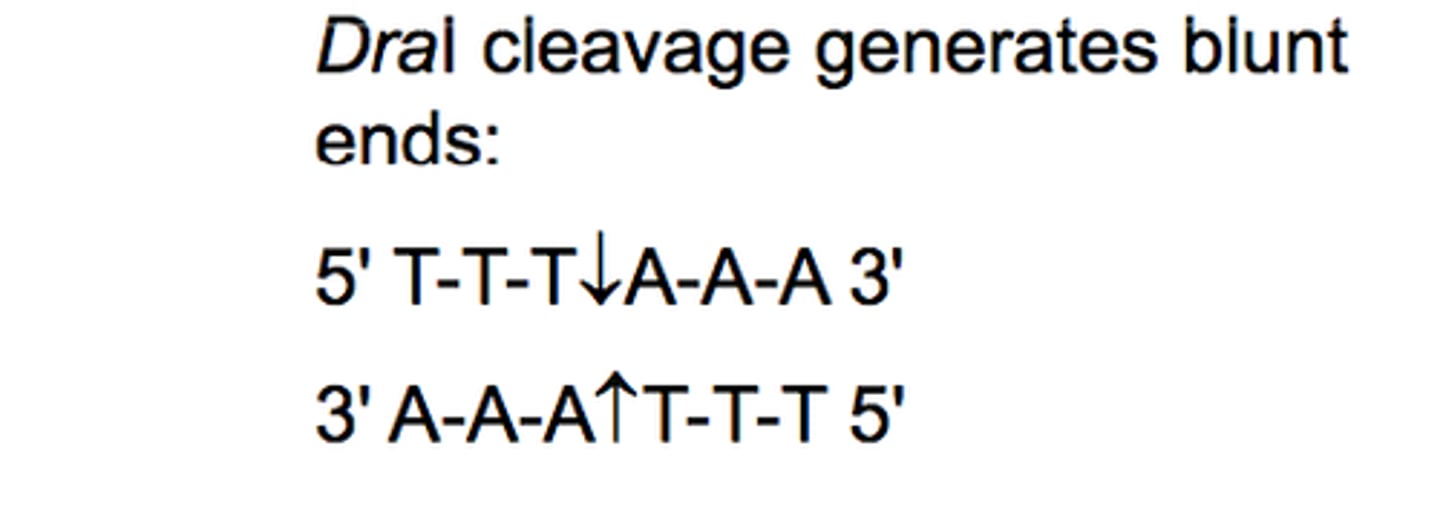
Factors that affect how Restriciton Enzymes work
pH and temperature
Things restriction enzymes can be used for
1. Identifying differences in sequences
2. Cutting out target sequences of DNA
3. Splicing DNA sequences in
If you cut a piece of linear DNA that contains two restriction sites with that restriction enzyme you would get
Three pieces
If you cut a plasmid piece of DNA that contains two restriction sites with that restriction enzyme you would get
Two pieces
A restriction digest
Is the process of cutting DNA molecules with restriction enzymes
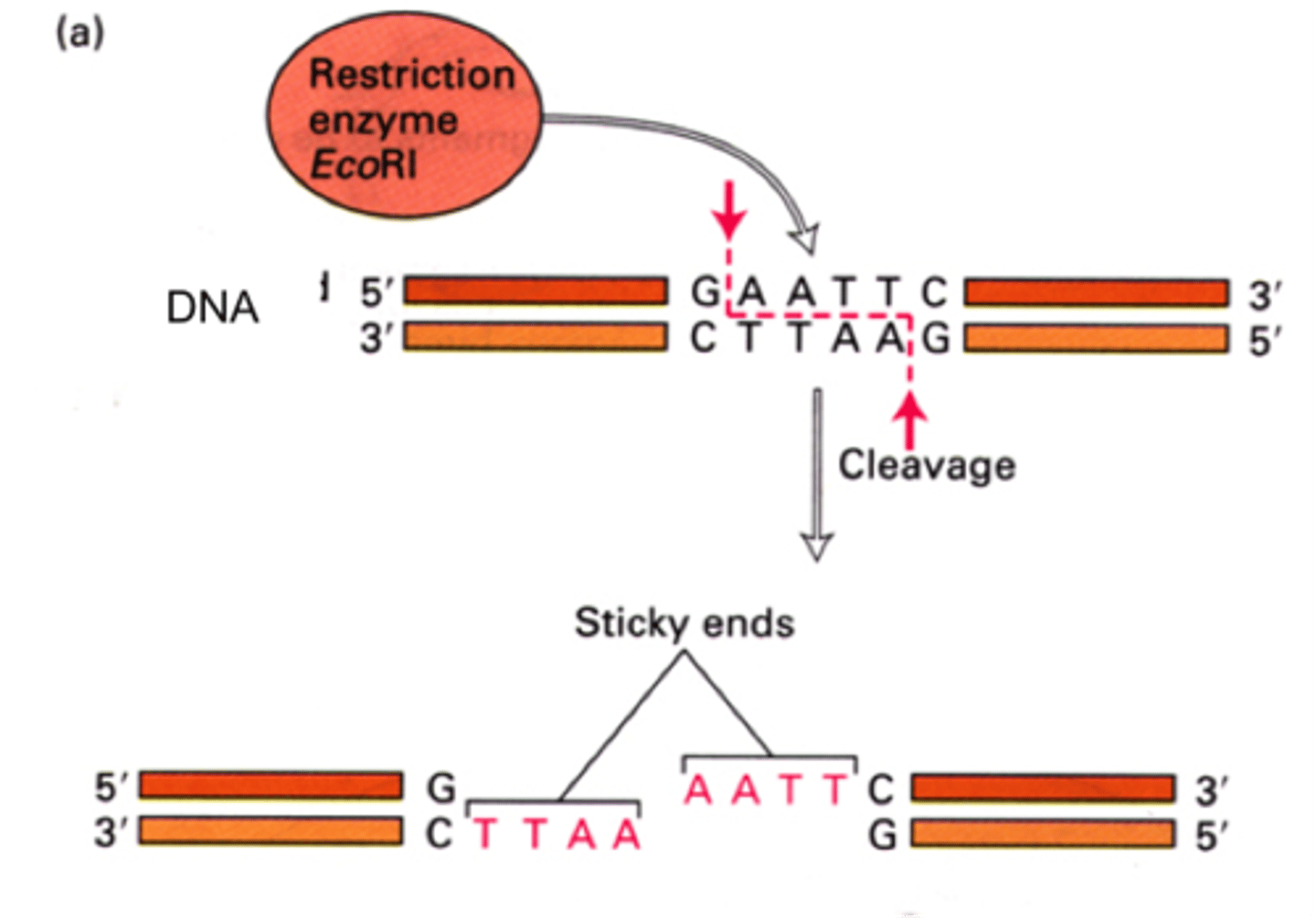
Plasmid
small circular DNA molecules that replicate separately from the bacterial chromosome
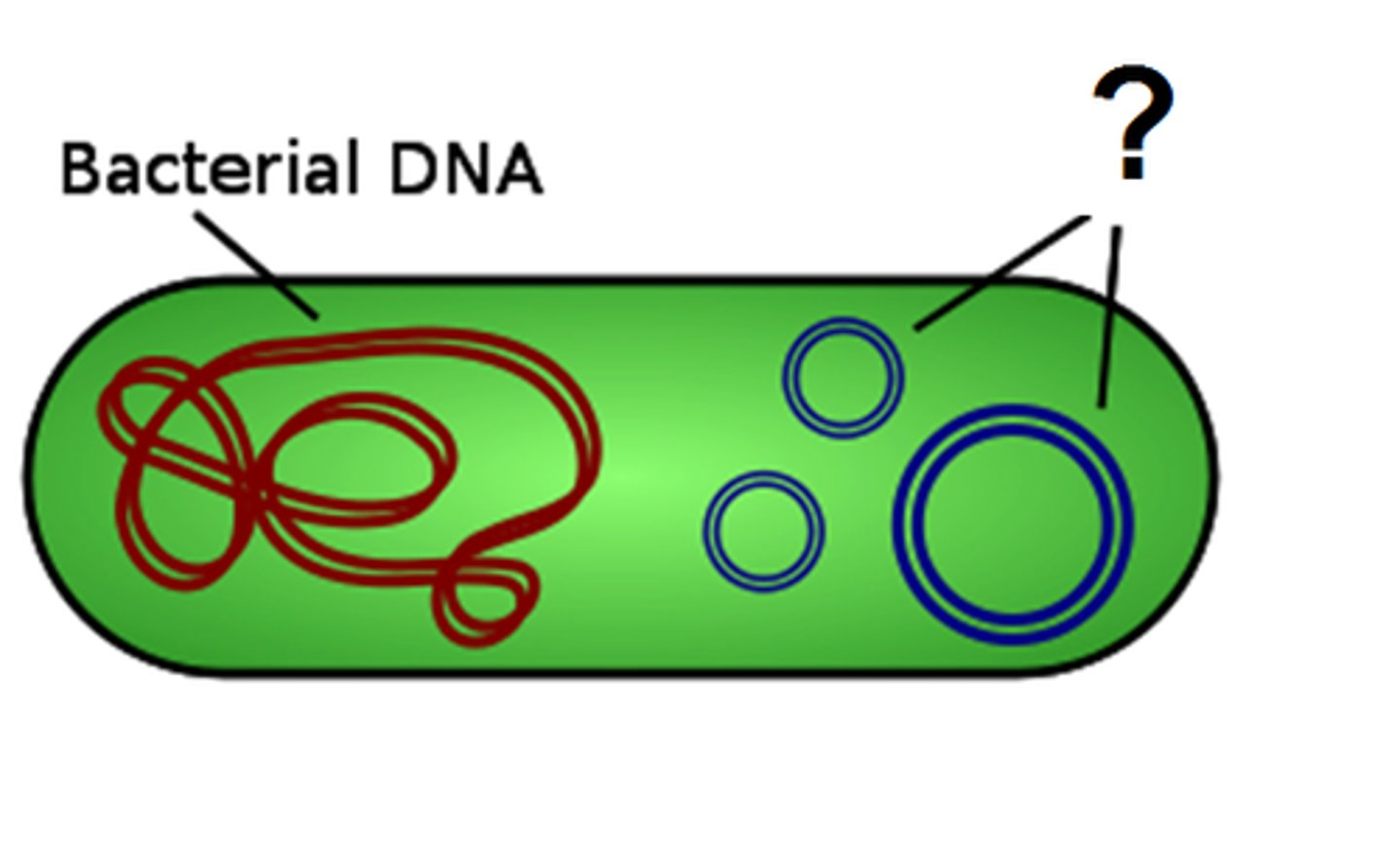
Restriction Buffer
Helps to control the pH so the enzyme works well
Incubator
Helps to control the temperature so that the enzyme works well

EcoRI, BamHI, HindII, PstI
Are examples of restriction enzymes
Lambda DNA
Is viral DNA that would be cut by restriction enzymes
Covalent Bonds
The kind of bonds that restriction enzymes break between nucleotides
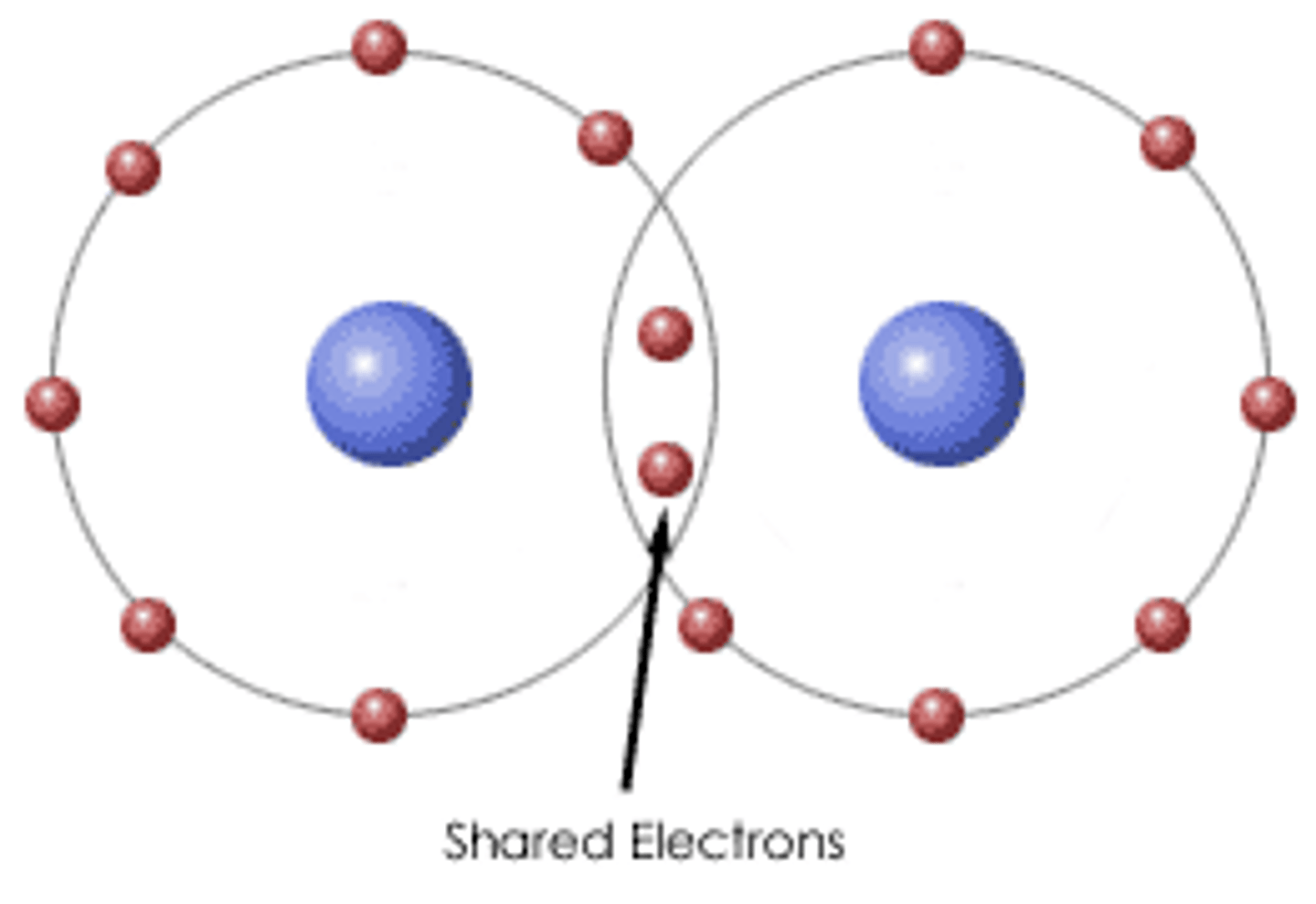
Hydrogen bonds
the weak bonds between two strands of DNA
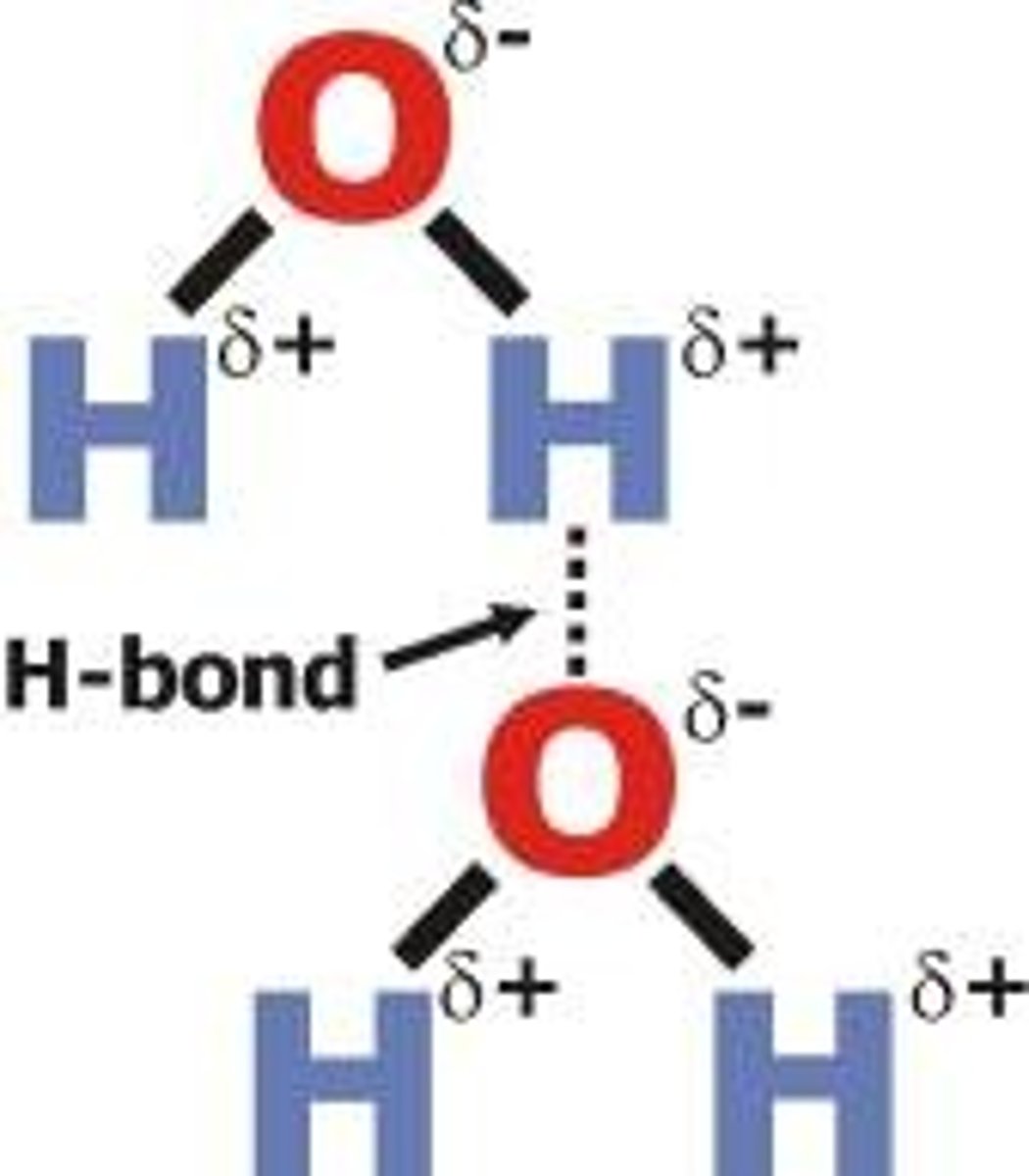
DNA ligation
The process of joining two pieces of DNA to a single piece through the use of ligase (DNA enzyme).
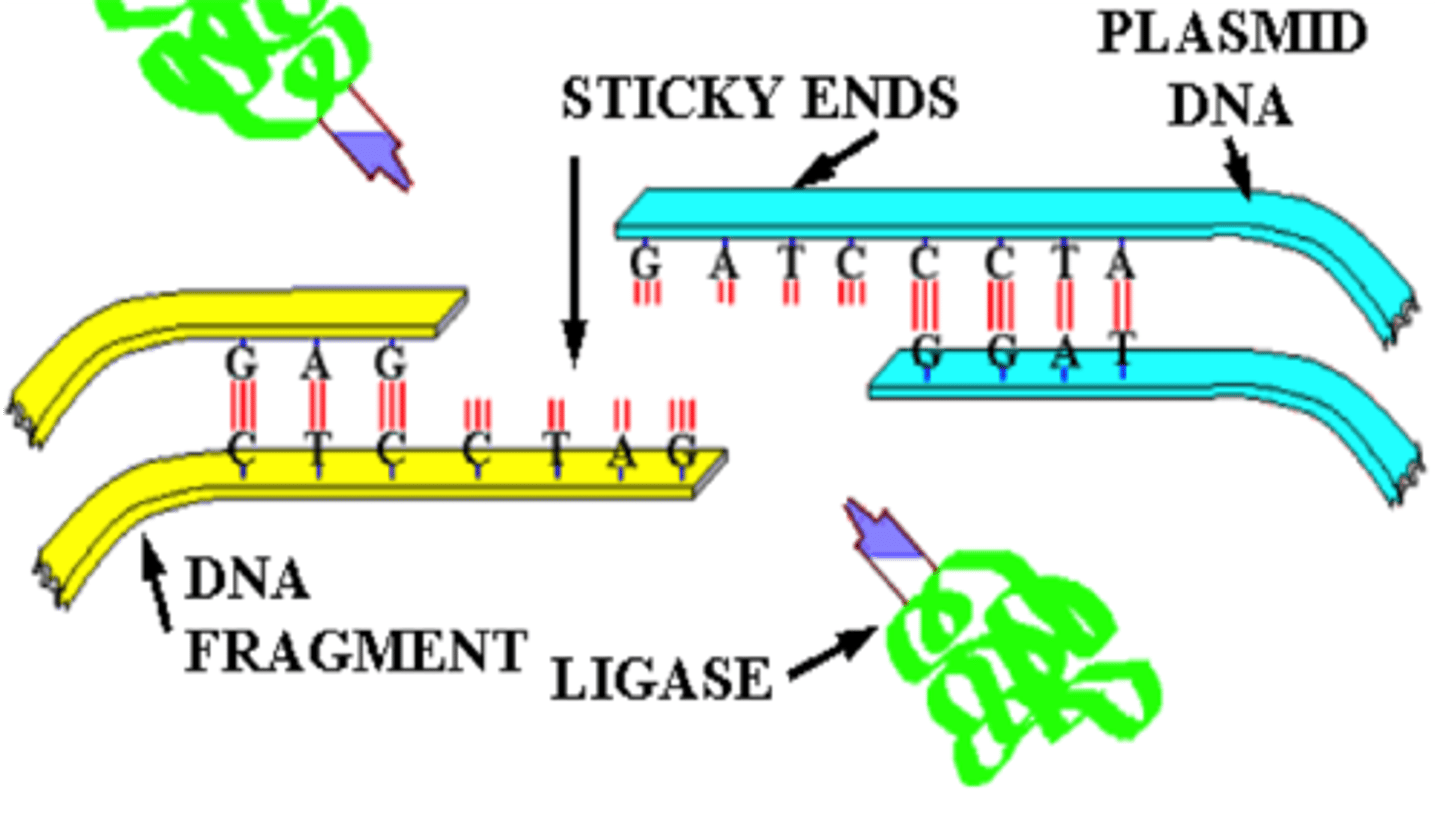
base pairs
Any of the pairs formed between complimentary bases in the two nucleotide chains of DNA, such as A-T and C-G (DNA); A-U and C-G (RNA)
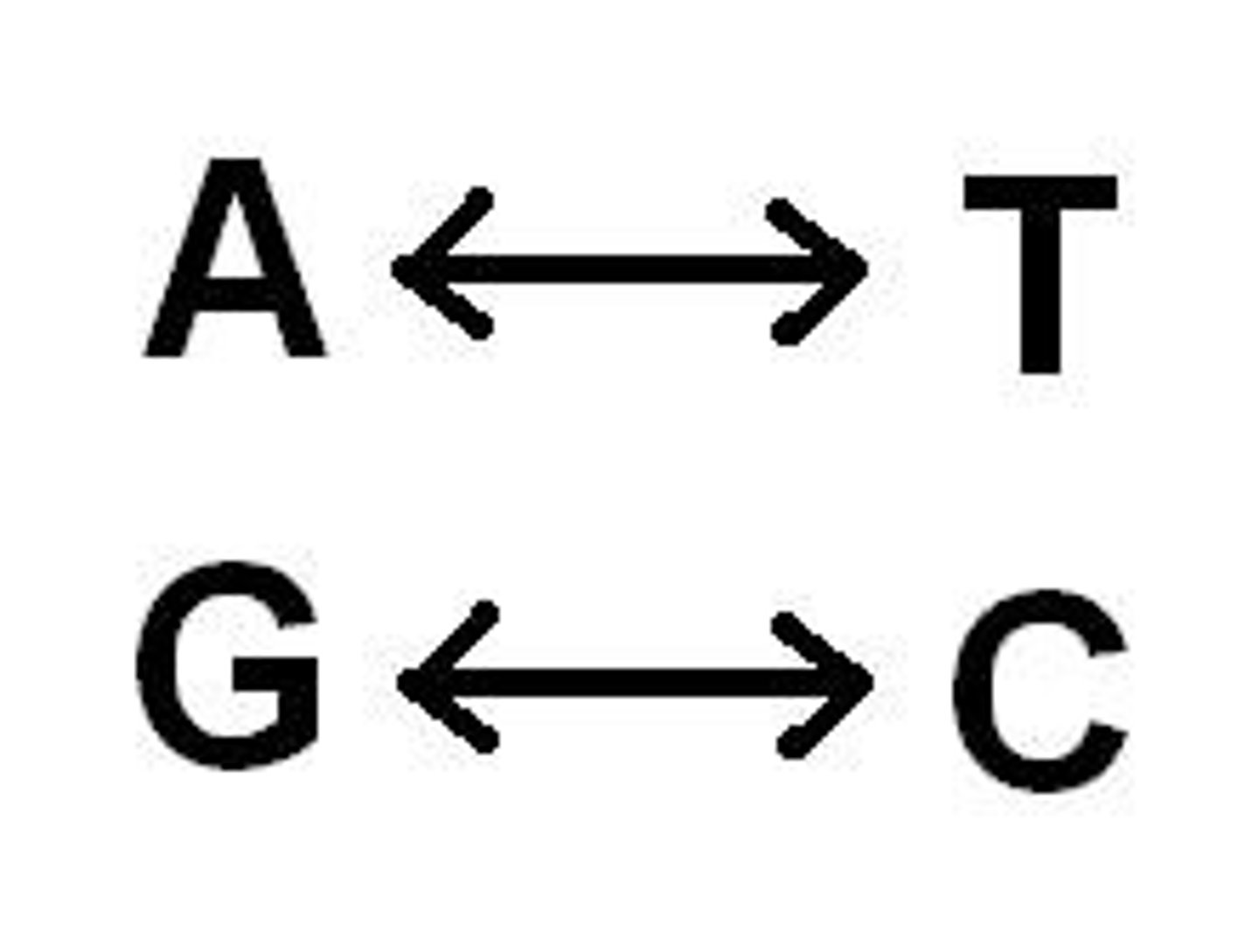
Plasmid Map
map of a plasmids tells you where the genes are located, and the restriction sites- can also tell you number of bp between restriction sites.
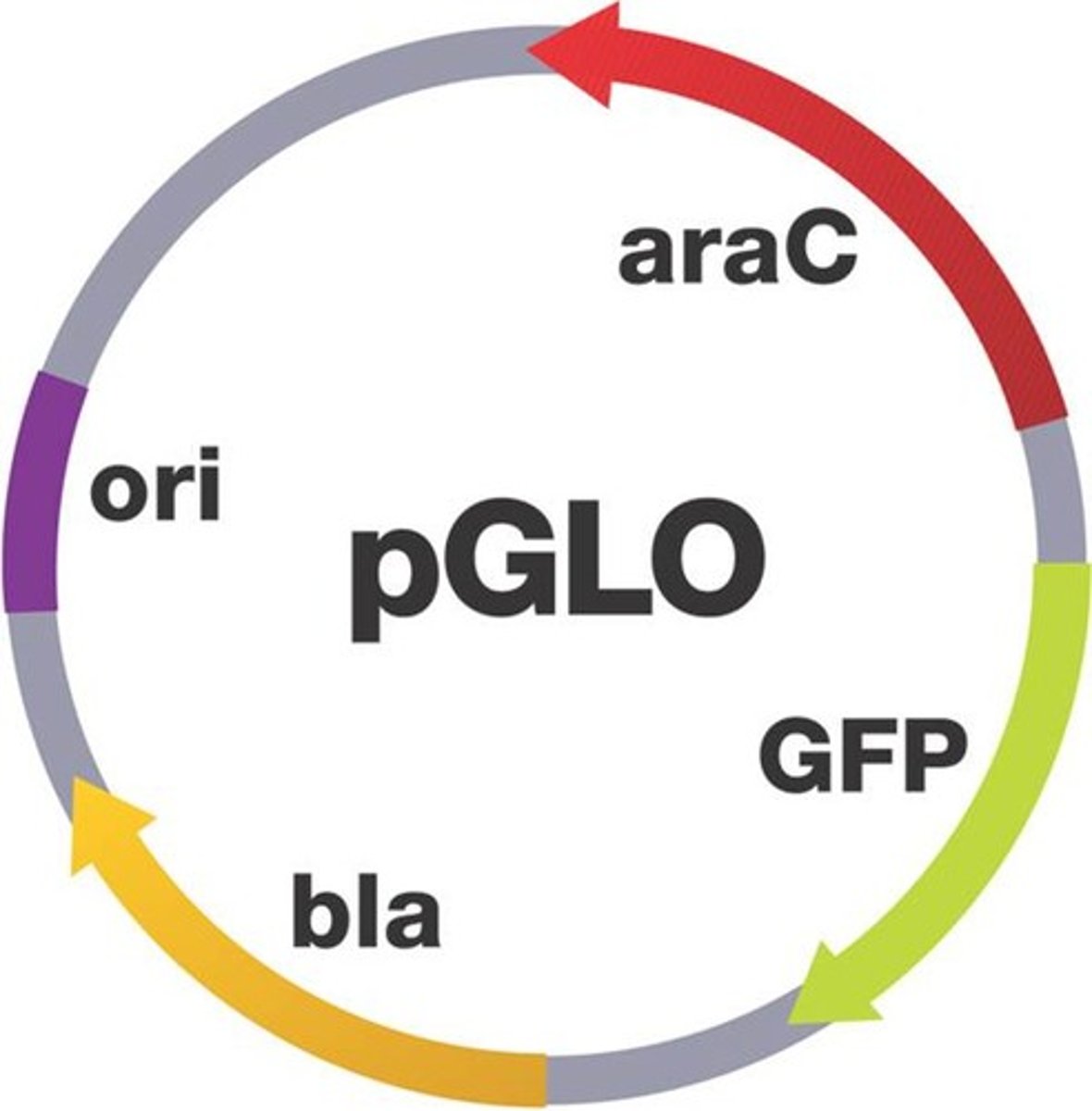
clone
A group of replicas of all or part of a macromolecule and especially DNA.
Vector
An agent (as a plasmid or virus) that contains or carries modified genetic material and can be used to introduce extra genes into the genome of an organism.
ligation
The process of joining together chemical chains (as of DNA or protein).
DNA ligase
A linking enzyme essential for DNA replication; catalyzes the covalent bonding of the 3' end of a new DNA fragment to the 5' end of a growing chain.
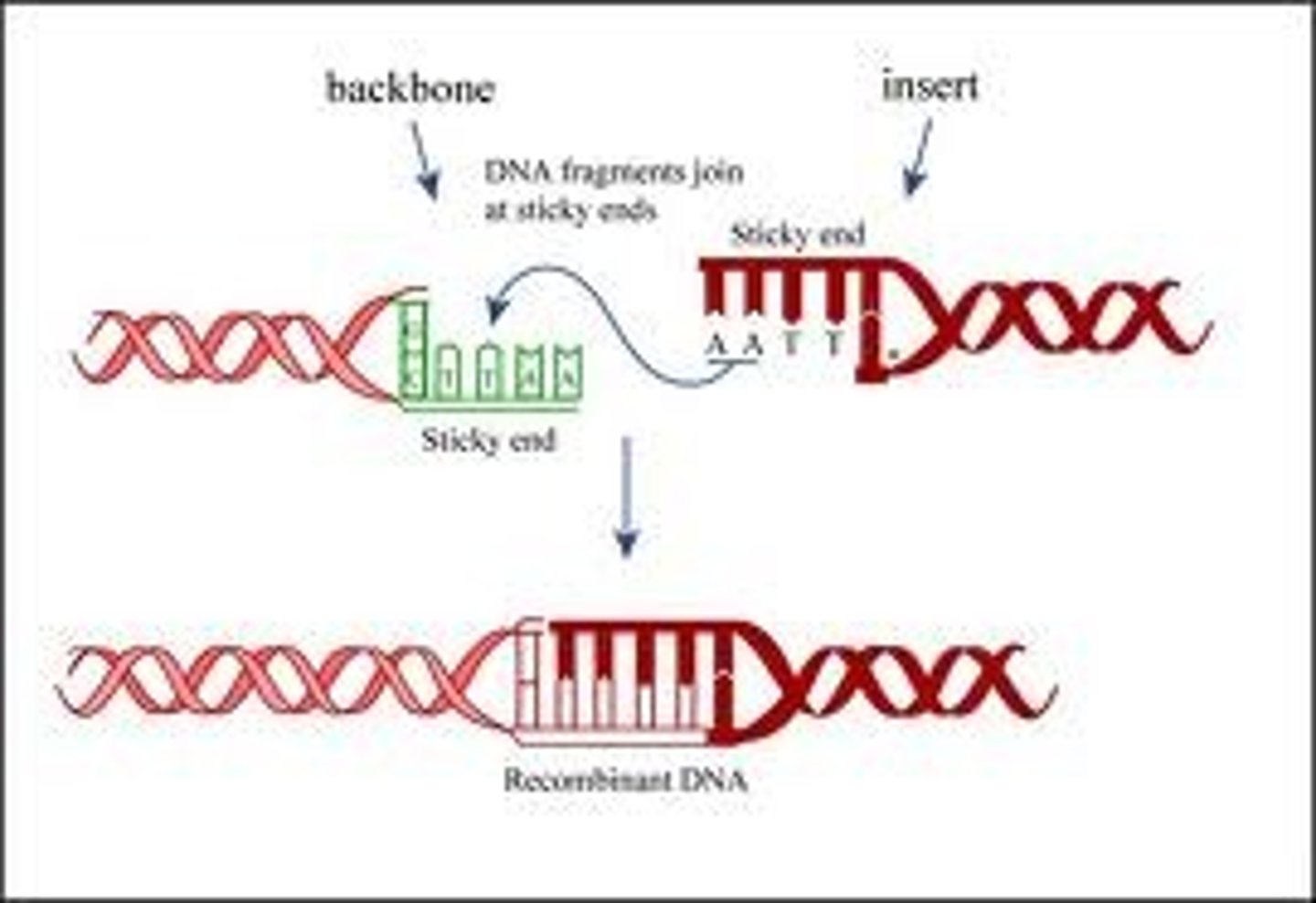
serve as molecular scissors, recognize specific DNA sequences and cut the nucleotide strands.
restriction enzymes
A small ring of DNA that carries accessory genes separate from those of the bacterial chromosome.
plasmid
After plasmids are cut with restriction enzymes, they can be joined or ....
ligated
Once transformed into competent bacteria, the cells reproduce and the plasmid containing the new gene is copied. This new piece of DNA has been "______" in plasmid DNA
cloned
An agent (as a plasmid or virus) that contains or carries modified genetic material and can be used to introduce extra genes into the genome of an organism.
vector
Plasmids can be mapped or described in terms of
the location of their restriction sites
where a restriction enzyme cuts is called
restriction sites
EcoRI and BamHI make ____ ends
sticky
HaeIII makes ___ ends
blunt
What type of "ends" is used to make recombinant DNA molecules
sticky
restriction enzymes can be used to cut a _______
gene of interest
a plasmid is cut with the _____ enzyme which was used for the gene of interest
same
how does the gene of interest bind to the plasmid?
complementary base pairing
what enzyme glues the DNA back together
DNA ligase
after the insertion of a vector into a cell, what is produced?
protein of interest
when the plasmid is copied, the gene of interest is not. (t/f)
False
term for when the plasmid ligates without the gene
self-ligation
term for when the gene of interest is backward in the plasmid
inversion
an inversion means that the gene of interest cannot be expressed in the cell (t/f)
True
Explain what you would see on a gel if restriction enzymes were not added and digestion was unsuccessful.
a single band representing undigested DNA, size would be of the plasmid
Explain how you could use digestion with restriction enzymes and subsequent analysis of the resulting fragments using electrophoresis to prove that your ligation was a success.
gel electrophoresis would show the bands of different lengths in each lane
Gel analysis of fragments in step 6 shows that even though the undigested DNA and DNA digested with HindIII are both 1000 bp, they do not run exactly the same distance on a gel. Explain one possible reason for this discrepancy.
the digested DNA may have a different shape or conformation after the cutting using the HindIII enzyme
Explain how plasmids can be used to clone a DNA sequence of interest.
inserting the DNA sequence of interest using restriction enzyme. then the recombinant plasmid can be inserted into a cell where it replicates the plasmid and produces many copies of the sequence of interest.
You are trying to match DNA found at a crime scene with two possible suspects. Why would it be a better use of your time and resources to analyze the DNA using a double restriction digest rather than a single digest? HINT: Think back to your DNA Detectives gel analysis in HBS.
A double restriction digest involves the use of two restriction enzymes to cut DNA into fragments; more precise and distinctive pattern of DNA fragments that can be used to differentiate between individuals with similar DNA. On the other hand, a single digest may not cut DNA into fragments that are unique enough to distinguish between two individuals with similar DNA
process by which a recombinant plasmid is introduced in a host cell is called
transformation
Recombinant DNA
the joining of edited DNA made from the combination of two or more sequences
plasmids
small ring of DNA that carries genes. Dna can be inserted
ligation
joining of chemical chains (dna or protein)
clones
groups of replicas of all or part of a macromolecule especially DNA
restriction enzyme
cut of strands of DNA at different sites or sequences
vector
an agent containing modified genetic material to introduce extra genes into the genome of an organism
explain the two ends of dna
sticky- zig zag blunt- equal halves
What is are enzymes that makes sticky end cuts?
EcoRI, PstI, HindIII
blunt end enzyme
HAIII
how can plasmids be used to clone DNA
by having the target gene inserted into it
how to insert enzymes into graph
Inserting another enzyme would add to the whole of the graph
recombinant DNA
A DNA molecule made in vitro with segments from different sources.
plasmid
A small ring of DNA that carriers accessory genes separate from those of the bacterial chromosome.
clone
A group of replicas of all or part of a macromolecule and especially DNA
DNA ligation
A linking enzyme essential for DNA replication and recombinant DNA techniques.
ligation
The process of joining together chemical chains (as of DNA or protein).
restriction enzymes
Enzyme that cuts DNA at a specific sequence of nucleotides
blunt ends
Restriction fragments with no overlapping ends and that never combine with another type of DNA
sticky ends
the uneven ends of a double-stranded DNA molecule that has been cut with a restriction enzyme
plasmid map
map of a plasmids that tells you where specific genes are located.
vector
a DNA molecule used as a vehicle to artificially carry foreign genetic material into another cell, where it can be replicated and/or expressed. When containing foreign DNA is termed recombinant DNA.